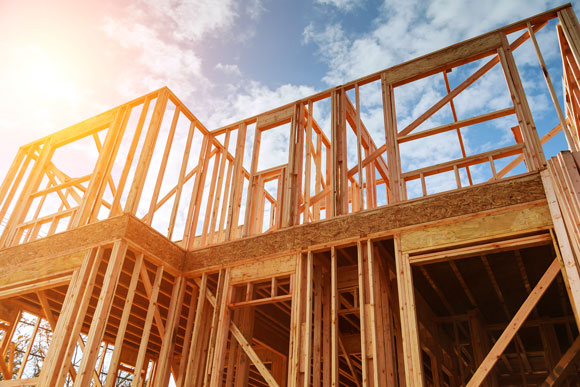Construction MMI: February construction spending up 6% year over year
The Construction Monthly Metals Index (MMI) fell 8.0% this month.
Looking for metal price forecasting and data analysis in one easy-to-use platform? Inquire about MetalMiner Insights today!
U.S. construction spending
U.S. construction spending in February reached a seasonally adjusted annual rate of $1,366.7 billion, down 1.3% from the January total, the U.S. Census Bureau reported in its most recent construction spending release.
However, the February spending figure marked a 6.0% increase compared with February 2019 spending.
Through the first two months of 2020, construction spending amounted to $193.5 billion, up 8.2% compared with the same two-month period in 2019.
Private construction spending hit a seasonally adjusted annual rate of $1,025.8 billion, down 1.2% from January.
Under the umbrella of private construction, residential construction reached a seasonally adjusted annual rate of $564.3 billion, down 0.6% from the revised January estimate of $567.6 billion. Nonresidential construction fell 2.0% to $461.5 billion in February.
Public construction, meanwhile, reached an estimated seasonally adjusted annual rate of $340.9 billion, down 1.5% from January.
Within public construction, educational construction was down 1.5% to a seasonally adjusted annual rate of $79.5 billion. Highway construction dropped 1.2% to a seasonally adjusted annual rate of $102.4 billion.
Robert Dietz, chief economist for the National Association of Home Builders, analyzed the impact of the coronavirus outbreak and the tightening of lending standards.
“More fundamentally, anecdotal reports indicate lending standards are increasing for mortgage applications, and lending conditions for residential construction is tightening despite lower rates,” Dietz wrote. “Without financing for builders, housing starts will slow significantly. NAHB is conducting weekly polling, part of which asks about builder financing availability.”
In addition, amid shelter-in-place orders aimed at curbing the spread of the novel coronavirus, potential home buyer traffic has already taken a hit, according to NAHB survey data.
“In NAHB survey data from this week, potential buyer traffic ranked as the most immediate concern, with 69% of builders indicating major declines,” Dietz wrote. “89% of remodelers noted that home owners cited concerns about interacting with workers and crews. Several more issues surveyed worsened this week. For example, the percentage of builders who cited an increase in delays of single-family permit approval increased from 57% to 80%. Building inspection delays increased from 50% to 78%. Multifamily concerns are rising about rent payments as well.”
Architecture billings grow for sixth straight month
After slumping through the early part of 2019, architecture billings have showed steady growth over the last six months.
In February, the Architecture Billings Index (ABI) — released monthly by the American Institute of Architects — posted a reading of 53.4, marking the sixth straight month of billings growth (any reading greater than 50 indicates billings growth).
The ABI registered at 52.2 in January.
“The Architecture Billings Index (ABI) score of 53.4 for the month reflected the strongest growth in billings at firms over this six-month period, demonstrating a healthy start to the year through the first two months,” this month’s ABI report stated. “Project inquiries and new design contracts also showed healthy gains, although both grew at a slower pace than in January.”
By region, the South led the way in billings growth, posting a reading of 58.0. The South was trailed by the Midwest (53.6), the West (49.8) and the Northeast (49.4).
Infrastructure spending in the age of the coronavirus
With the economy under stress from the coronavirus outbreak, one area for potential revitalization lies in the infrastructure sector.
Late last month, Congress passed and President Donald Trump signed into law a $2.2 trillion coronavirus stimulus package.
House Speaker Nancy Pelosi had previously been supportive of tackling infrastructure needs in subsequent coronavirus-related stimulus packages but appeared to take a different tack in a CNBC interview Friday.
“While I’m very much in favor of doing some things we need to do to meet the needs — clean water, more broadband, the rest of that — that may have to be for a bill beyond this,” Pelosi was quoted as saying by The Hill.
With the focus on the worsening health crisis and increasing rates of infection as testing has ramped up, infrastructure’s place in any future coronavirus stimulus packages remains to be seen, even if infrastructure improvement is broadly considered a bipartisan issue.
“With interest rates for the United States being at ZERO, this is the time to do our decades long awaited Infrastructure Bill,” Trump tweeted March 31. “It should be VERY BIG & BOLD, Two Trillion Dollars, and be focused solely on jobs and rebuilding the once great infrastructure of our Country! Phase 4.”
Previous infrastructure proposals floated by Trump ultimately did not gain traction.
Perhaps the gravity of the current pandemic, from the health crisis to the resulting deleterious impact on employment levels, will inspire big-picture thinking with respect to tackling a wholesale overhaul of America’s infrastructure.
Lower your metal spend. Trial MetalMiner’s monthly metal buying outlook now.
Actual metal prices and trends
The Chinese steel rebar price fell 2.1% month over month to $488.55/mt as of April 1. Chinese H-beam steel fell 1.3% to $495.61/mt.
U.S. shredded scrap steel fell 7.5% to $260/st.
European commercial 1050 aluminum sheet dropped 8.5% to $2,172.25/mt.
Chinese 62% iron ore PB fines fell 1.3% to $74.13 per dry metric ton.




Leave a Reply